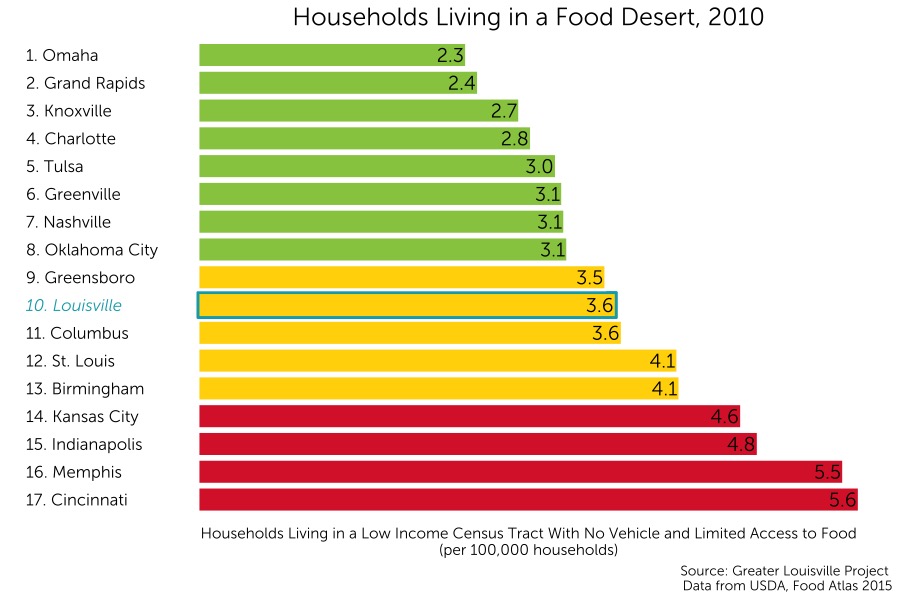Food Deserts
Food deserts are a weakness in a city infrastructure’s ability to provide poorer residents with access to healthy food options. A lack of access to nutritious food options multiplies the barriers to health and wellbeing that individuals who live in multidimensional poverty face daily. For many living in food deserts, gas stations or convenience stores are the closest options for obtaining sustenance. For individuals already experiencing multidimensional poverty, living in a food desert can lead to malnutrition, obesity, or decreased educational and economic achievement.

